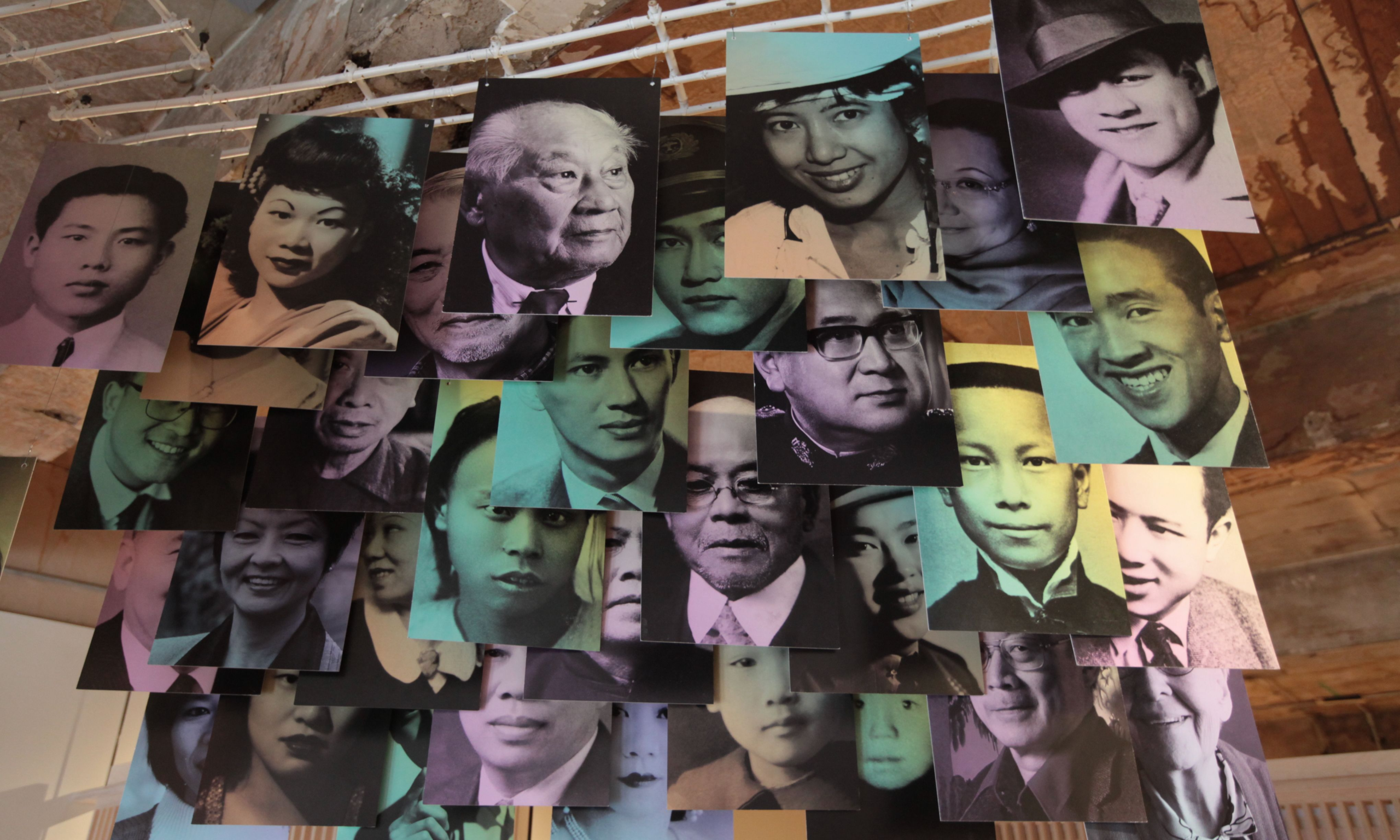Installtion view of A Seat at the Table in the temporary museum space. Courtesy Chinese Canadian Museum Society of BC.
When the eminent collector Bob Rennie was first approached last year about transforming the Rennie Museum in Vancouver’s Chinatown into a new home for the Chinese Canadian Museum, he initially declined the offer. Reached by telephone in New York after an art tour of Brazil, the globe-trotting Vancouverite recalls: “I said no. It was my family legacy.”
The museum, comprising more than 2,000 works in Rennie’s collection focusing on social justice and identity issues, opened in 2009 with an exhibition devoted to the British-Palestinian artist Mona Hatoum. The opening capped a five year renovation of the historic Wing Sang building by local architects Francl Architecture and Mcfarlane Green Biggar, which was built by Chinese immigrant Yip Sang in 1889.
The museum has not only become an iconic Vancouver building in its own right but is very much Rennie’s “baby”. He added, “But sometimes, you have to let your child go.”
Rennie is board president of the Tate Americas Foundation and was recently named chair of acquisitions for contemporary art at the Art Institute of Chicago. He says he and his family “asked ourselves some tough questions, namely how could we own the oldest building in Chinatown and yet have the Chinese-Canadian Museum in a lesser building”.
The Chinese Canadian Museum Society of BC opened the temporary exhibition A Seat at the Table in August 2020 in an Edwardian building down the street from Wing Sang. In the midst of pandemic era anti-Asian racism, the show played on the immigrant restaurateur tradition to examine the Chinese experience in Canada from the days of railway labourers. Visitors to the show were greeted by what looks like a shopfront in the transformed Hon Hsing Building—once an athletics club used for lion dancing practice—with a giant dragon mask and a hand painted wok on display.
The month before the opening, the society received a $10m grant from the British Columbia government, which was part of a joint effort by the provincial and civic governments to have the city's Chinatown designated as a UNESCO World Heritage Site.
After meetings between Rennie and the society as well as Melanie Mark, BC’s minister of tourism, arts, culture and sport, it was announced in February that the provincial government would provide funding to the society to acquire the Wing Sang building with a C$7.8m gift from the Rennie Foundation.
“The contributions of Chinese Canadians to this province have been invaluable,” the BC premier John Horgan said. “The Chinese Canadian Museum responds to the community’s long-standing desire for a place to share stories of achievement and shine a light on injustice. The museum will be an important place for all British Columbians, connecting the past to the present and future generations.”
Grace Wong, the board chair of the Chinese Canadian Museum Society, added: “This is a historic moment for Chinese Canadians across the province. This is the first such museum in Canada and will widely share the history, contributions and heritage of Chinese Canadians and their lived experiences. Having the home in the Wing Sang Building, one of the most historic buildings of Vancouver Chinatown, is particularly meaningful.”
As for the future of the Rennie Collection, Rennie says that for now it will be housed in a warehouse in the Vancouver suburb of Burnaby and available for private tours. He will move his real estate marketing offices that adjoin the Wing Sang to a 16,000 sq. ft space formerly owned by yoga wear company Lululemon, just below his own home in Kitsilano on the city’s West Side.
Meanwhile, Rennie has 92 works on loan to galleries worldwide and is looking closely at how to continue collaborations with university galleries, such as the Morris and Helen Belkin Art Gallery in Vancouver, where Rennie was on the board for over a decade. Education will remain a focus, says Rennie, as will development of a new sculpture park to display the many sculptures in his collection. But now that he has ensured a permanent home for the Chinese Canadian Museum, he is currently on the lookout for a new space for his collection.
A final show in September will feature previously unseen works by around 45 artists. The Chinese Canadian museum will take up residence in early 2023, marking the 100th anniversary of the “head tax”, a legislation that imposed a $50 fee for Chinese citizens emigrating to Canada. From 1923 to 1947, only 50 Chinese citizens emigrated to Canada.
“Canada has been so good at hiding our own racism,” notes Rennie, “As we point the finger at our neighbours to the South.”
Now the Chinese Canadian museum will not only celebrate the history and achievements of a people that have survived that racism and thrived in spite of it, but an important Canadian heritage building will be preserved in perpetuity.

